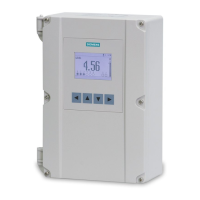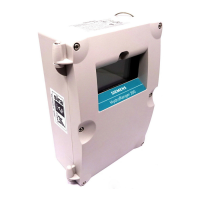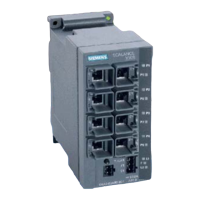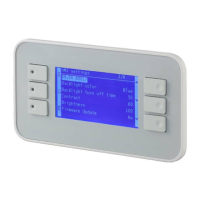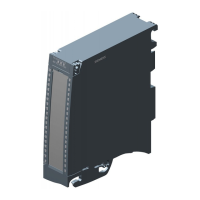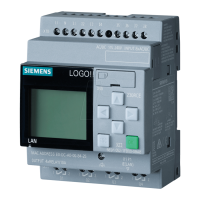Connecting Page: 41 Basic safety notes Covers safety warnings related to hazardous contact voltage and electrical installation directives.
Terminal board Details the terminal board layout and recommended torque for terminal screws.
Transducers Provides warnings and information about connecting transducers, including cable extensions.
Relays Describes relay ratings and behavior during power failure.
Temperature sensor Explains the importance of accurate temperature readings and conditions for using a separate TS-3 sensor.
mA input Provides information on parameters related to mA input for measurement and SCADA integration.
mA output Details parameters for configuring mA output to send a 4 to 20 mA signal.
Power Covers power connection notes, including AC power requirements and grounding.
Digital communication Explains how device communication allows integration into SCADA systems or industrial LANs.
Operating Page: 91 Single-point models Details the device's default operation for single-point models and parameters to configure.
Dual-point models Explains the device's initial state in dual-point mode and basic parameters for measurement setup.
Relays Introduces relays as primary controls for external devices like pumps or alarms.
Relay functions Covers programmable relay functions categorized into Alarms, Pumps, and others.
Pump control Covers pump control strategies for water/wastewater applications.
Alarms Covers various alarm types and their configuration, including level, rate, and temperature alarms.
Parameter reference Page: 157 Key terms Explains key terms like Default, Global, and Index used in parameter tables.
Parameter indexing Explains the use of index selector parameters to define measurement signal paths.
Index types Explains different types of indexes used for parameters and their available counts.
Setup (2.) Covers setup parameters related to sensor, calibration, rate, fail-safe, and current output/input.
Relays (2.8.) Covers basic setup for relays, including selector, level source, and preset applications.
Fail-safe (2.4.) Ensures devices default to an appropriate state when a valid level reading is unavailable.
Volume (2.7.) Explains volume conversion from level measurements, including vessel shapes and characterization.
Rate (2.3.) Covers fill rate, empty rate, and response rate parameters.
Diagnostics (3.2.) Covers diagnostic functions, including transducer selector, echo profile, and master reset.
Security (5.) Covers security parameters like write protection and user PIN.
Technical data Page: 297 Power Details power specifications for AC and DC versions, including voltage and fuse ratings.
Operating conditions Lists operating conditions such as location, altitude, temperature, and humidity.
Performance Specifies accuracy, resolution, memory, range, and temperature compensation details.
Programming Outlines primary and secondary programming methods.
Outputs Details mA analog outputs, relay capabilities, and communication interfaces.
Inputs Specifies available mA (analog) and Discrete input types and their characteristics.
Construction Describes the device's construction, including enclosure types, display, cable specs, and weight.
Approvals Lists device approvals for non-hazardous and hazardous applications.
Transducers Lists compatible transducer series and their frequencies.
Technical reference Page: 301 Transmit pulse Explains electrical shot pulses supplied to the transducer and their parameters.
Echo processing Details echo enhancement, true echo selection, and echo verification processes.
Algorithm Describes echo selection algorithms and their suggested use in different applications.
Distance calculation Explains the formula and factors used to calculate the transducer to material level distance.
Sound velocity Discusses factors affecting sound velocity and the device's compensation methods.
Scanning Explains how the scanning relay changes state to supply transmit pulses after Scan Delay.
Volume calculation Details features for volume calculation, including vessel shape and universal calculations.
Flow calculation Lists the numerous OCM flow calculation features supported by the device.
Communications Page: 323 Modbus Details the device's support for the Modbus protocol via RS-485 port.
Parameter indexing Explains how parameters are indexed (primary/secondary) for accessing values.
Reading parameters Provides steps for reading parameter values using Global or Parameter-specific index methods.
Writing parameters Details the steps for writing parameter values to the device via Modbus.
Format words Explains format words containing up to three values used for accessing parameters.
Data types Explains how device parameters are converted to/from 16-bit integers.
Split values Explains parameters that are pairs of numbers separated by a colon.
Text messages Lists text messages converted to integers and provided in registers.
Error handling Covers error handling for Modbus responses and general error conditions.
